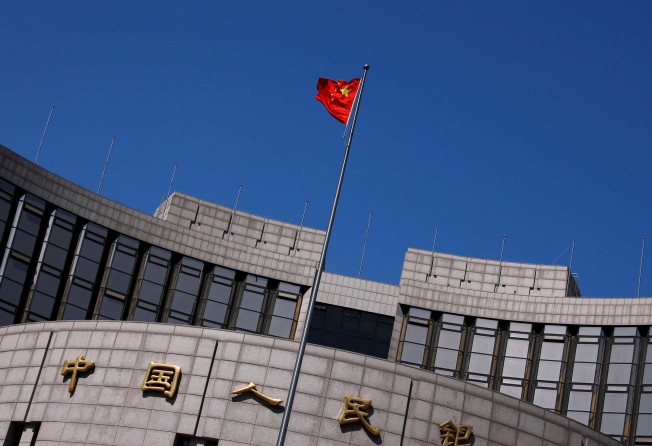
China raises money market rates to stabilise yuan and outflow, after Fed’s move
PBOC lifts reverse repo rate by 10 basis points, injects fresh funds of 303 billion yuan through medium-term lending facility

The People’s Bank of China raised its monetary market rate for the second time this year, and injected fresh funds into the country’s banking system, to stabilise the currency and ease capital outflow pressure, after the quarter-point rate increase by the US Federal Reserve overnight.
The PBOC raised the reverse repo rate by 10 basis points on Thursday, and injected 303 billion yuan (US$44 billion) of funds into 17 of mainland China’s financial institutions via the medium-term lending facility (MLF), setting the six-month MLF rate at 3.05 per cent and the one-year MLF at 3.2 per cent, according to a statement on the central bank’s website.
The MLF tool was first introduced in 2014 to help commercial and policy banks maintain liquidity by allowing them to borrow from the central bank.
The reverse repo, or repurchase, is a process whereby the central bank buys securities from banks through bidding with an agreement to sell them back in the future. The PBOC conducted 80 billion yuan of reverse repos on Thursday.

The purchase rate for seven-day reverse repos worth 20 billion yuan was set at 2.45 per cent, 10 basis points higher than 2.35 per cent set on Wednesday, while 14-day contracts worth 20 billion yuan were set at 2.6 per cent, up from 2.5 per cent on Wednesday.
Contracts of 28-day terms worth 40 billion yuan were set at 2.75 per cent, up from 2.65 Wednesday.
Overnight, the US Fed – for the second time in three months – increased its benchmark interest rate by 25 basis points amid rising confidence for economic growth.
In the afternoon, Reuters cited two sources saying the PBOC also raised the rate of its standing lending facility (SLF) short term loans by 20 basis points to 3.3 per cent.
The PBOC said the move “does not mean any change in the monetary policy stance” in a statement e on its official website on Thursday morning.
It also noted as long as the benchmark lending/deposit rates remain unchanged, the rate movements in the inter-bank market are not equivalent to a “policy rate hike”.
Zhou Hao, an economist at Commerzbank, said the PBOC’s move was mainly adopted to defend the yuan.
We need time to see whether the rate rise in the inter-bank market will pass through to the bank loans
“China’s central bank wants to maintain a relatively high rates of CNY, and this will also increase the cost of shorting CNY, in order to ease the pressure of CNY depreciation,” he said.
“Looking forward, we need time to see whether the rate rise in the inter-bank market will pass through to the bank loans,” he said.
China has to follow the Fed’s moves to “prevent the hit on the real economy by massive capital movement”, said Sun Binbin with Tianfeng Securities, local brokerage house.
Sun said China’s money market rates will increases further if the Fed continues to raise policy rates.
Larry Hu, the China economist at Macquarie Capital in Hong Kong, wrote in a note that the “mini-hike” in China isn likely to continue partly because China’s central bank “doesn’t want to lag behind the curve” when its US and European counterparts move towards tightening.
Following the Fed’s move, the Hong Kong Monetary Authority raised interest rates by the same margin to maintain the stability in the Hong Kong dollar’s peg to the US currency.
The renminbi’s exchange rate should be relatively stable this year even as rising US interest rates contribute to foreign exchange volatility, the PBOC’s governor Zhou Xiaochuan said last week during China’s annual parliamentary meetings. He said China has many monetary policy tools to ensure that policy will remain prudent and neutral.